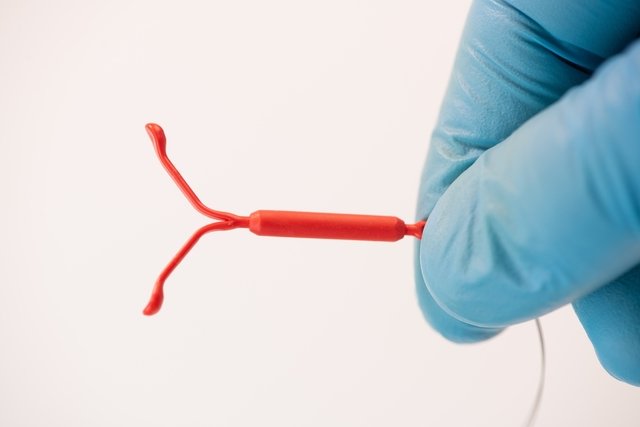A woman who uses the IUD as a contraceptive method can, in fact, become pregnant, however this is an extremely rare situation and occurs mainly when the IUD is out of the correct position, which makes pregnancy easier.
Therefore, it is recommended that women check every month if they can feel the IUD string in their intimate area and, if this does not happen, that they consult a gynecologist as soon as possible to assess whether it is well positioned.
When pregnancy occurs, it is easier to identify when the IUD is made of copper, as in these cases menstruation, which continues to come down, is delayed. With the Mirena IUD, for example, as there is no menstruation, the woman may take until the first symptoms of pregnancy to suspect that she is pregnant.

Symptoms of pregnancy with IUD
Symptoms of an IUD pregnancy are similar to any other pregnancy and include:
- Frequent nausea, especially after waking up;
- Increased sensitivity in the breasts;
- Cramps and bloating in the belly;
- Increased urge to urinate;
- Excessive tiredness;
- Sudden mood changes.
It is also possible for a delay in menstruation in women who use a copper IUD, as this type of device allows menstruation to continue and, in the absence of menstruation, pregnancy may be suspected.
When using hormonal IUDs, such as Mirena or Jaydess, there is no menstruation. In this case, it is possible that a pinkish discharge will be noticed, which is an indication that the fertilized egg has been implanted in the uterus, however it is more common for the woman to identify the pregnancy when the first symptoms appear.
Read too: 14 first symptoms of pregnancy (week by week)
How to know that the IUD has come out of place
In some cases, the displacement of the IUD can cause some signs and symptoms, such as irregular bleeding, abdominal pain and stitching in the wall of the uterus, and it is important that a doctor is consulted.
However, symptoms are not always present and, therefore, to find out if the IUD has come out of place, you can do a self-examination, which consists of understanding the length of the thread. To do this, you must squat and, with clean hands, insert a finger into the vagina until you reach the cervix, which corresponds to a rounded surface where it is possible to notice the presence of the thread, which usually measures between 1 and 2 centimeters.
During the touch, if an increase in the length of the thread is noticed or it is not possible to find it, it may be an indication that the IUD has come out of place, and it is important to consult a gynecologist.
To confirm the position of the IUD, the doctor usually requests a transvaginal ultrasound, as this way it is possible to identify the location of the IUD with greater precision and, therefore, replace it if necessary.
Risks of getting pregnant with an IUD
One of the most common complications of getting pregnant with an IUD is the risk of miscarriage, especially when the device is kept in the uterus until a few weeks into pregnancy. However, even if it is removed, the risk is much higher than that of a woman who became pregnant without the IUD.
Furthermore, the use of IUDs can also cause an ectopic pregnancy, in which the embryo develops in the tubes, putting not only the pregnancy at risk, but also the woman’s reproductive organs. Understand better what this complication is.
Therefore, to reduce the chances of these complications arising, it is advisable to consult a gynecologist as soon as possible to confirm suspicions of pregnancy and remove the IUD, if necessary.
Bibliography
- PLANNED PARENTHOOD. How safe is the intrauterine device (IUD)?. Available at: <https://www.plannedparenthood.org/es/temas-de-salud/anticonceptivos/dispositive-intrauterino-diu/que-tan-seguro-es-el-dispósito-intrauterino-diu#:~:text =If%20you%20be%20pregnant%20in the meantime, when%20they%20insert%20the%20IUD.>. Access on 23 Jan 2024
- SAFE SEX GUIDE. Non-hormonal intrauterine device (IUD). Available at: <https://guiadesexoseguro.org/birth-control-options/non-hormonal-iud>. Access on 23 Jan 2024

Sign up for our newsletter and stay up to date with exclusive news
that can transform your routine!
Warning: Undefined array key "title" in /home/storelat/public_html/wp-content/plugins/link-whisper-premium/templates/frontend/related-posts.php on line 12
Warning: Undefined array key "title_tag" in /home/storelat/public_html/wp-content/plugins/link-whisper-premium/templates/frontend/related-posts.php on line 13



